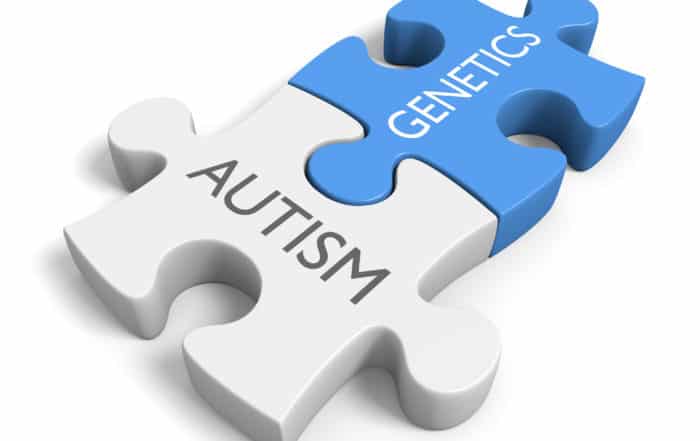Megan MacDonald, Ph.D., and Megan McClelland, Ph.D., discuss emerging research on the relationship between motor skill development and executive function in autism. They define motor skills and executive function, discuss their long-term impact on health and academic success, and consider their co-development during childhood and adolescence. The speakers highlight the importance of EF and motor skills in daily life, underscoring their malleability and potential for learning and building new skills. MacDonald and McClelland consider the effect of cultural contexts on skill development before the Q&A session.
Handouts are online HERE
In this webinar:
2:45 – Presentation overview
3:20 – Executive function
6:25 – Motor Skills
9:20 – Motor skills and autism
13:30 – Motor skill development
19:00 – Executive function and motor skills
22:20 – Cultural contexts
28:13 – Conclusions
30:20 – Q&A
Executive function
McClelland defines executive function (EF) as cognitive processes/skills like attention, working memory, and inhibitory control that lay the foundation for self-regulation (3:20). She explains that EF skills have emerged as a key indicator for a variety of short and long-term behaviors, including social competence in children and academic success throughout adolescents and early adulthood (4:55). She notes a recent publication that found that children with strong attention/persistence at age four had nearly 50% greater odds of completing university by age 25, underscoring long-term health, educational, and employment outcomes associated with EF (6:10).
- Self-regulation in childhood as a predictor of future outcomes: A meta-analytic review. (Robson et al., 2020)
- Predictors of early growth in academic achievement: the head-toes-knees-shoulders task (McClelland et al., 2013)
Motor skills
MacDonald discusses gross motor skills, highlighting their importance for everyday activities like walking, running, lifting, and throwing. Both EF and motor skills are foundational for learning and early development, and children begin to have a core set of motor skills between seven and eleven years old (6:25). The speaker relates motor skills to a mountain of motor development, where each level builds on top of the last (8:15). Fine motor skills involve coordinating perceptions with motor movements (visuomotor integration), allowing us to control handwriting, buttoning shirts, drawing, and coloring in the lines. Visuomotor integration has also been linked to children’s academic success (8:25).
Motor skills in autism
The presenter briefly reviews key autistic characteristics and prevalence rates, highlighting the role of gross motor skills in social and physical development during childhood (9:20). She cites references to motor skill deficits dating back to the first descriptions of autism. MacDonald explains that early delays in motor development milestones (i.e., walking and crawling) are common in autistic children and that parents/caregivers may start noticing delays between fourteen and twenty-four months (10:50). Motor skills used by school-aged children are different and center around social interactions and sports (12:48).
- Developing together: The role of executive function and motor skills in children’s early academic lives. (McClelland & Cameron, 2019)
- Fine motor skills and early comprehension of the world: two new school readiness indicators (Grissmer et al., 2010)
- Fine Motor Skills and Executive Function Both Contribute to Kindergarten Achievement (Cameron et al., 2012)
Motor skill development
MacDonald outlines one of her publications on gross motor development across the first three years of life in autistic children (13:30). Gross motor skill development for autistic children showed consistent delays at each check-up, with children being nearly one year behind expected development targets by age three (14:15). Similarly findings for fine motor skill development in autistic children was slightly more than one year behind expected development by age three (15:15). Another study on school-aged children found that kids between ten and twelve years old were chronologically about half their age in terms of motor skill development (16:05). Therefore, the speaker asserts that gross and fine motor skill development in autism is delayed in autism from early life at least through childhood.
Despite these delays, the speaker remains hopeful and iterates to viewers that motor skills are incredibly malleable and can be taught and improved with time (17:15). McClelland cites accumulating research suggesting that EF skills are a vital buffer/protective factor for children experiencing early risk factors. She reiterates that EF and motor skills are highly malleable and that we can do a lot to improve these aspects of development in autistic children (18:00).
- Motor skills of toddlers with autism spectrum disorders (Lloyd et al., 2013)
- Fundamental Movement Skills and Autism Spectrum Disorders (Staples & Reid, 2010)
- School Readiness and Self-Regulation: A Developmental Psychobiological Approach (Blair & Raver, 2015)
- Relations between early family risk, children’s behavioral regulation, and academic achievement (Sektnan et al., 2010)
- Developing together: The role of executive function and motor skills in children’s early academic lives. (McClelland & Cameron, 2019)
Executive function and motor skills
McClelland discusses contemporary evidence suggesting the co-development of EF and motor skills in young children. She explains that some brain regions are involved in both EF and motor skill development, and certain EF traits (e.g., memory and inhibitory control) are related to fine motor skills (19:00). McDonald notes that, until very recently, motor skills and EF were studied independently. She highlights contemporary collaborative research and its importance in understanding autism (20:50).
- Behavioral self-regulation and executive function both predict visuomotor skills and early academic achievement (Becker et al., 2014)
- Visuomotor integration and inhibitory control compensate for each other in school readiness (Cameron et al., 2015)
- Exercise improves executive function and achievement and alters brain activation in overweight children: A randomized, controlled trial (Davis et al., 2010)
- Prefrontal cortex development and development of cognitive functions (Diamond, 2000)
- Relations of Preschoolers’ Visual-Motor and Object Manipulation Skills With Executive Function and Social Behavior (MacDonald et al., 2016)
Cultural contexts
McDonald states that fine motor skills are associated with cognitive flexibility but that much of the research is based in the U.S. or other Western countries (22:20). A recent study found that Chinese children exhibit better fine motor skill performance while U.S. students have better object control skills (23:00). Similarly, gross motor skills of pre-schoolers in China were significantly lower than pre-schoolers in the U.S. Such findings, the speaker asserts, suggest that different cultures emphasize different skill sets in early life (fine vs gross) (24:15).
The speaker outlines a recent survey study on EF and motor skills in autistic children from Taiwan and the U.S. (24:45). She outlines data collection and analysis methods, including regressions and covariates (26:10). Results show that motor skills are associated with EF across countries. Further, the relationship between EF and motor skills is culturally comparable, with significant and positive correlations of magnitude in both countries. She asserts that this preliminary evidence suggests the relationship between EF and motor skills is not specific to region or culture (27:15).
- Association between motor skills and executive function of children with autism spectrum disorder in Taiwan and the United States (Sung et al., 2024)
Conclusions
McClellan reviews the presentation, highlighting that EF and motor skills contribute to healthy development and academic success for children from diverse backgrounds. She reiterates the malleability of these skills and their importance for daily activities. The speaker considers how improvements in EF may impact motor skills and vice versa (28:13). She gives thanks and acknowledgments before the Q&A, where the presenters discuss the impact of COVID on EF, intervention options, monitoring EF supports in daily life, the importance of routine and planning, and much more (30:20).
Originally published on May 7, 2024
The speakers:


Megan McClelland, PhD, is the Katherine E. Smith Professor of Healthy Children and Families at Oregon State University (OSU) where she serves as Endowed Director at the Hallie E. Ford Center for Healthy Children and Families. Her research focuses on optimizing children’s development, especially as it relates to children’s self-regulation, early learning, and school success. Her recent work has examined links between self-regulation and long-term outcomes from early childhood to adulthood, recent advances in measuring self-regulation, and intervention efforts to improve these skills in young children. She works with colleagues and collaborators around the world and is currently involved with a number of national and international projects to develop measures of self-regulation and improve school success in young children.
Take the knowledge quiz
Can’t see the quiz below? Take it online HERE
The Low-Hanging Fruit: Exploring Monogenic Syndromes with Elevated Rates of Autism
Dr. Daniel Vogt, Ph.D., explores monogenic syndromes and what they can tell us about the underlying causes of autism. He describes signaling pathways critical in early development, highlighting the electrical nature of
Behavioral and Brain Signatures of Autism in Females
Kaustubh Supekar, Ph.D., examines recent findings about gender/sex differences in autism phenotypes and brain organization. He highlights the underrepresentation of females in autism and underscores the need for a large-scale science approach. The
Editorial – Setting Priorities for Autism Research
Autism organizations, individuals with autism spectrum disorders (ASD), and parents have differing views on how best to proceed with autism research. However, nearly all of us can agree that the progress that
Research on Maternal Immune Activation, Pregnancy & Covid-19
Learn about emerging findings on maternal immune activation and Covid-19. About the speaker: Judy Van de Water, PhD, joined the faculty in the
Possible Fat-Related Biomarker Detected in Very Young Children with Autism
Researchers in Japan report that they have identified a possible biomarker for autism spectrum disorders (ASD) in very young children. Noting that both low birth weight and obesity in infancy are known
Editorial – Debating the Role of Genetics in Autism
The history of autism is replete with arguments about its underlying causes and treatments—and frequently over the past 50 years, these arguments have involved genetics. While it is generally accepted that genes






